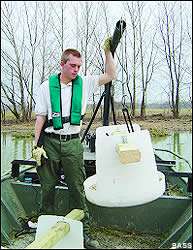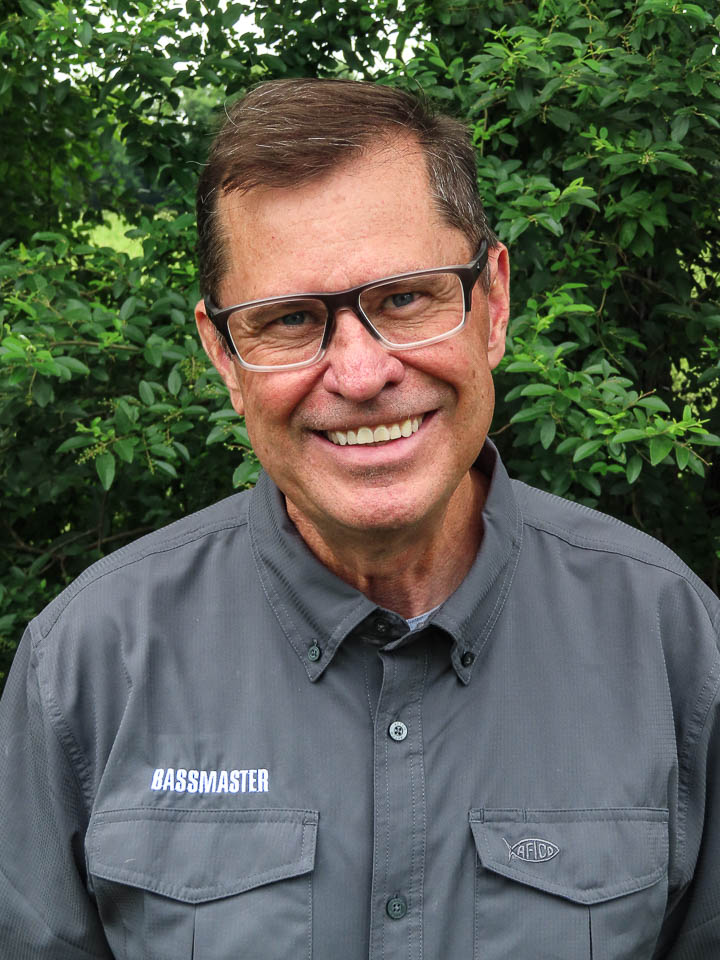
Tournament anglers rank it as one of the worst places on earth to cast a line. And the Kentucky BASS Federation decided to do something about it.The place is the Ohio River, and 664 miles of it form much of the northern border of the state of Kentucky. Like it or not, the river flowing over much of the Bluegrass State is a regular tournament stop for the Federation. And while it's still too soon to tell, a project embraced by the Federation is showing promise for revitalizing the river's bass fishery.
The idea is not new, but the innovation and application add a new twist to the concept of artificial habitat. Partnering with Kentucky Department of Fish and Wildlife Resources, the Federation designed a man-made spawning habitat it calls the "Henley Hatchery" after the biologist who is tracking progress of the project. Looking beyond the clever barrels made to provide spawning nests for bass, is the congruent chemistry existing between KDFWR's Doug Henley and John Romans, Kentucky's conservation director.
"What we both realize is that stabilizing the population and increasing it by only a few percentage points can make a huge impact on the Ohio River," says Romans. "From there, it can only get better on its own." The project began in 2002 when the Federation voted to take a proactive approach to an issue that for years has plagued resource managers in the seven states sharing the river. Collectively, the states formed the Ohio River Fisheries Management Team to address the issue. Until then, improving the river's ailing bass fishery was viewed as a stretch due to the heavy loads of silt that wash into spawning tributaries. The other option, stocking the river, was considered a losing proposition, since recruitment would suffer as a result of the enduring siltation.
"What we determined, obviously, was that spawning habitat was virtually nonexistent in many places," observes Romans. "And to dredge it would be too costly and ineffective, since it only comes back over time."Through trial and error, the Federation worked with Henley to design the artificial hatchery structures. The fundamental blueprint design was to create a faux firm bottom for the bass to make a nest and deposit eggs for hatching.
The habitats are made from recycled 30- and 55-gallon barrels collected from various resources, including Romans' employer Dow Corning Corp. Barrels are washed to remove toxins and then cut in half. A 12-inch square is then cut on two sides and within 2 inches of the bottom of the barrel. A 5-inch-wide slot is then cut near the top of each remaining side. The final steps involve pouring concrete into the bottom and adding a layer of pea gravel before the mixture dries. Lastly, a log or piece of driftwood is slipped into the slot to add more habitat to the structure. After all the slicing, cutting and pouring of concrete, the KDFWR and the Federation had 50 of the structures built over the course of the winter. And then it came time to decide where to put them. The group chose the Meldahl Pool, considered the worst of the worst on the scale of bass fishing in the river.Prior to the spawning season, crews placed the structures in two creeks, leaving another two tributaries vacant to compare research results as progress is monitored by Henley and his staff. Unfortunately, the river played a dirty trick and went out of its banks after above-average ran fell across the region last spring. A lesson was learned and the project continues.
In the meantime, the effort has shown signs of success in a test environment where bluegill followed bass in using the structures for spawning."That is a good sign, we believe, because these structures will help the entire aquatic ecosystem," believes Romans.Meanwhile, the Federation applied for and received a permit from the U.S. Army Corps of Engineers to place other types of spawning structure elsewhere in the river, and specifically in the Cannelton, McAlpine and Markland pools. To date, more than 50 Henley Hatcheries have been placed in the Markland, with plans to continue placement of the structures in remaining, permitted creeks. By this winter, the Federation hopes to have planted 150 of the structures on the Kentucky side of the river."What we are trying to ultimately do is increase the recruitment of the bass in the Ohio River," says Romans. "Our involvement is all about being proactive in addressing a problem that needed addressing for some time now."

